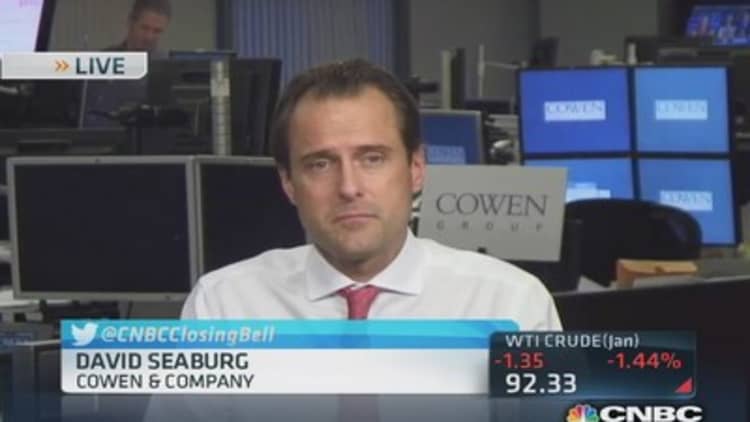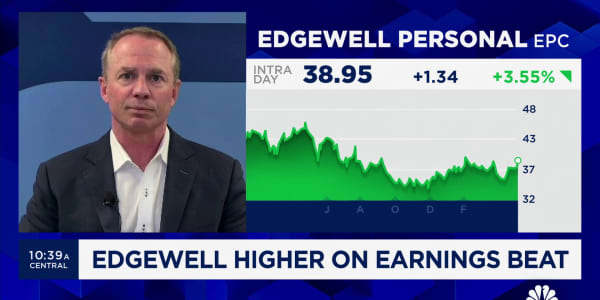As investors feel emboldened by the seemingly unstoppable stock market rally, they're borrowing money at record levels to keep things going.
Margin debt—a measure of how much market participants are borrowing to buy stocks—has soared to $412.5 billion on the New York Stock Exchange. The number represents a 13.2 percent gain from the beginning of 2013 and is fully 50 percent higher than the level in January 2012.
There are two ways to look at such a data point.
One is that investors are so confident in the market that they believe they're safe by funding their purchases from other sources and the market will rise sufficiently that they'll be able to repay their debts and pocket a nice profit.
That would be a good thing.

(Read more: Marc Faber: 'In a massive, speculative bubble')
The other is that investors are so confident that they're willing to take risk to levels seen just before reckless behavior helped take down the market after it peaked in October 2007.
That would be a bad thing.
"When the tablecloth gets pulled out from under the place settings, you're going to have a lot of them crash and smash on the floor," said Uri Landesman, president of Platinum Partners hedge fund. "That margin's going to get pulled and everyone's going to have to cover. That's when you get really serious corrections."
The correction call, however popular it has been, was the worst call of the year.
The market has continued to ride modest gains in earnings and the economy and a 33 percent expansion in the Federal Reserve's money-pumping operation to a 27 percent rise in the and similar gains in the other major indexes.
(Read more: Take cover! Bond market 'hell' could be on the way)
While stocks have seen a few mild and brief pullbacks, buyers have come in at every interval to keep things moving.
"So far the market has been buoyed by liquidity, has been buoyed by an economy that continues to gain traction, and obviously by a market that at least in the fourth quarter has been underpinned by very positive seasonality," said Quincy Krosby, chief market strategist at Prudential Annuities. "If there's some event that requires the proverbial margin call, that will see a domino effect begin."
It was, after all, essentially either margin calls or the threat of them against Wall Street's largest financial institutions that triggered the financial crisis in 2008 and 2009.
Both came amid what seemed like indestructible bull markets that also were pushed higher by leveraged buying.
Margin debt hit a pre-crisis peak of $378.2 billion in June 2007, just a few months before the highs in October, and reached a cycle low of $173.3 billion in February 2009, a month before the market bottom prior to the current bull run.
(Read more: Stocks are risky but no bubble yet, says Howard Marks)
Investors have utilized not only the nearly $4 trillion in quantitative easing from the Fed to pave the record to record debt but also near-zero interest rates.
Leveraged lending—involving little or no collateral and often to lower-quality borrowers—has hit $969 billion in 2013, second only to 2007 all-time and up 29 percent from a year ago, according to Dealogic.
"I think it's a sign of a bubble. It's sort of reminiscent of the cliche 'how soon they forget,'" Landesman said. "It's kind of what you would expect to happen in a nearly five-year bull market. People go in and want to get more chips on the table. That's how you end up with more margin debt. Brokerage firms are only too happy to lend it."
Indeed, Bank of America Merrill Lynch has by far the largest market share in leveraged lending, with a 14.2 percent market share that would translate to about $68 billion. JPMorgan Chase and Wells Fargo are second and third respectively.
Landesman said he thinks a market-moving event—perhaps another Washington budget crisis—will be the trigger for a selloff of at least 10 percent.
Krosby, though, said credit market behavior in the form of tightening swap spreads indicates signs of stability that likely will not come undone until a central bank move shakes the market.
(Read more: Stocks 'very overpriced,' and so what if they are?)
Most experts see the Fed beginning to decrease the amount of its $85 billion monthly bond-buying program in March, an event that could send negative market signals if rates start to rise.
"At least in terms of the credit market, there's a stability," she said. "But when you have a market that has been distorted by central banks, all it takes is a comment from one of of the central banks providing liquidity of a change in the landscape and then you'll see a barrage of selling."
—By CNBC's Jeff Cox. Follow him on Twitter @JeffCoxCNBCcom.






